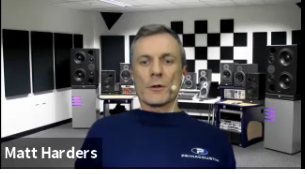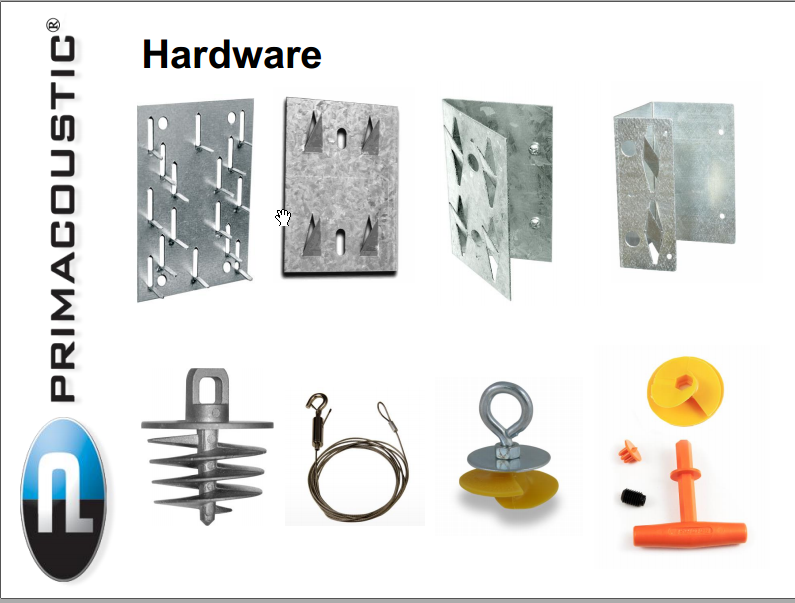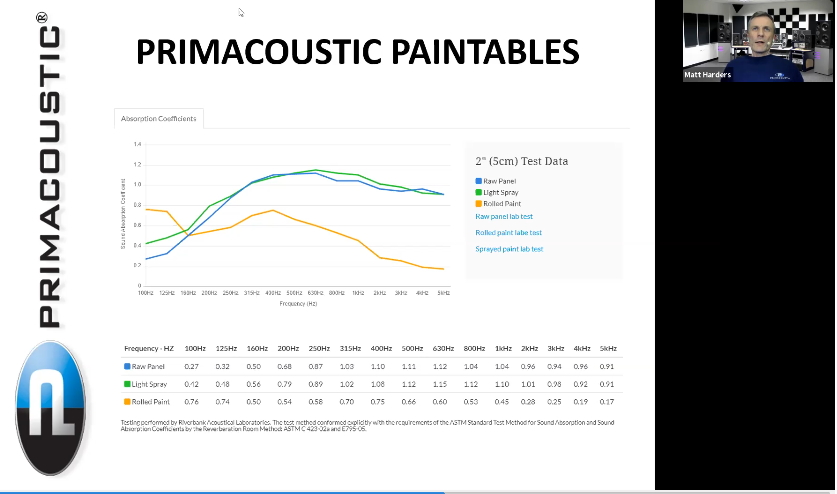On Monday 9th August, the Melbourne Section of the AES held our regular bi-monthly meeting.
We welcomed over 40 members and guests via Zoom.
Following the Section’s Annual General Meeting (see separate report at https://www.aesmelbourne.org.au/2021-agm-report/), Chairman Graeme Huon introduced Matt Harders, Amber Technologies Brand Manager for Radial/Primacoustic (amongst other brands) to present to us on the topic of
Acoustics Made Easy.

Following a brief history of Radial Engineering and how they came to develop the Primacoustic products, Matt fired up the slide show covering his topic.
He started with the issues that drive the need for acoustic treatment – noise pollution, safety, communications, voice intelligibility for messaging in public spaces, comfort, enjoyment, and finally professional entertainment workspaces like recording studios, film stages and broadcast studios. He then showed slides of some specific examples of spaces with acoustic treatment applied.
Matt then identified the situations when engaging an acoustic engineer might be necessary – scenarios like soundproofing, mission critical environments (recording studio, emergency services control rooms etc.), as well as the times when the scope and budget of the project demands a next-level professional approach for a highly predictable result.
He moved on to dispel some acoustic myths like “you need to be an acoustician to hang panels on the wall”, “rooms need a computerized analysis to achieve improvement”, “voodoo and witchcraft are involved in materials placement”, and “electronic processing will solve everything”; for the latter point he cited examples of the processing involved in videoconferencing apps (like Zoom) sometimes making the audio much worse.
He described what can be done to improve matters by the control of the sound via absorption – citing as the example of absorption affecting the sound the harsh reverberant sound of an empty living room, compared to the same room after the furniture and soft furnishings have been installed.

He showed examples of primary reflections showing how the direct + reflected sound can greatly affect the sound as heard at different locations within a space.
He introduced and described primary reflections, standing waves, and flutter echo. With graphics he showed how absorbing primary reflections can reduce the energy, and the effect of these undesirable characteristics.
Responding to an audience question he indicated that the percentage coverage recommendations was between 25-30% of wall area, depending on the use-case for the space. He commented that it does not all need to be on the walls – for example, some could be on the ceiling.
Matt then demonstrated how the panel thickness affects the efficiency of the panel across the frequency range, showing graphs of the absorption coefficients. These demonstrated that the thicker panels maintain absorption to much lower frequencies.
He then went on to describe the panel fastening options, with their “Impaler”, hooks and hanger devices covering flush and angled mounting as well as describing fastening brackets that allow airspace behind the panel to better control bass.

Matt then described the diaphragmatic resonator used in the MaxTrap and FullTrap bass trap panels to provide absorption below 100Hz. He went on to describe the diffuser products and the effect of diffusers on the sound dispersion.
At this point Matt fielded a question on the fibreglass panels and what measures are taken to limit glass fibres from escaping into the air. His response was that the fibres are hardened with a resin into a honeycomb structure that traps them, then the panel is encapsulated within a fine mesh to further limit the fibres’ movement, and finally the cloth covering provides an extra barrier.
Another participant asked about using the panels in a free-floating configuration, hanging vertically from the ceiling. Matt indicated that would work fine, with potentially slightly improved bass performance. It was also posited that it would offer increased efficiency by doubling the effective surface area.
Matt then moved on to compare the fibreglass panels to foam absorbers – suggesting they were superior at mid and low frequencies due to their higher density, as well as offering practical considerations like being easier to mount, remove, and reuse with their fastener system being better compared to the glue-on approach usually used with foam.
He then went on to describe some panel designs, and packaged kits suitable for different types and sizes of rooms, and their use-cases.
One style mentioned was the “Paintable” panels which can be spray painted to match existing décor, and the effect of spray paint application (preferred) versus roller application of the paint (definitely not recommended).

Ceiling treatment with the Stratus and Nimbus Cloud and Paintable panels was then described, as well as the Saturna baffles for free-hanging applications.
At the conclusion of the slide presentation Matt opened the floor to questions, where questions covered ceiling panel grid sizes (Imperial and Metric sizes available for many panels) and determining the optimum placement of panels (by establishing the location of sound sources).
Matt then demonstrated the use of the Room Calculator spreadsheet for optimizing the panel configuration for a particular room size and application, and demonstrated the use of the online Room Designer CAD package for designing the layout of the panels in the room.
The session concluded with further questions covering performance validation by on site measurement, staggering of panel positioning, ad-hoc addition of panels to improve an already traditionally treated room, and the current delivery situation. Matt assured the audience that, although the current difficulties may blow out shipping times, they always held stocks of their popular products like the London Kits.
There was also a question about a design for stereo and surround monitoring in same space, indicating that some iteration may be required but a design that works well would be possible.
We thank Matt for his excellent presentation.
The Zoom video recording of the meeting is available here and on our YouTube channel
The video can also be viewed directly on YouTube at:
https://www.youtube.com/watch?v=CmeDm-HKnhU
A PDF version of Matt’s slides can be viewed/downloaded at:
https://www.aesmelbourne.org.au/wp-content/media/Primacoustic Presentation.pdf
Extra Resources:
Primacoustic website: https://www.primacoustic.com/
Absorbtion Test Results for Primacoustic Panels can be found at: https://www.primacoustic.com/document-type/absorption-test/
The Room Calculator spreadsheet (xlsw format) is available at:
https://www.aesmelbourne.org.au/wp-content/media/Primacoustic-Room-Calculator-AU-21-1.xlsx
Room Designer web app: https://app.primacoustic.com/app/index.html?v3

